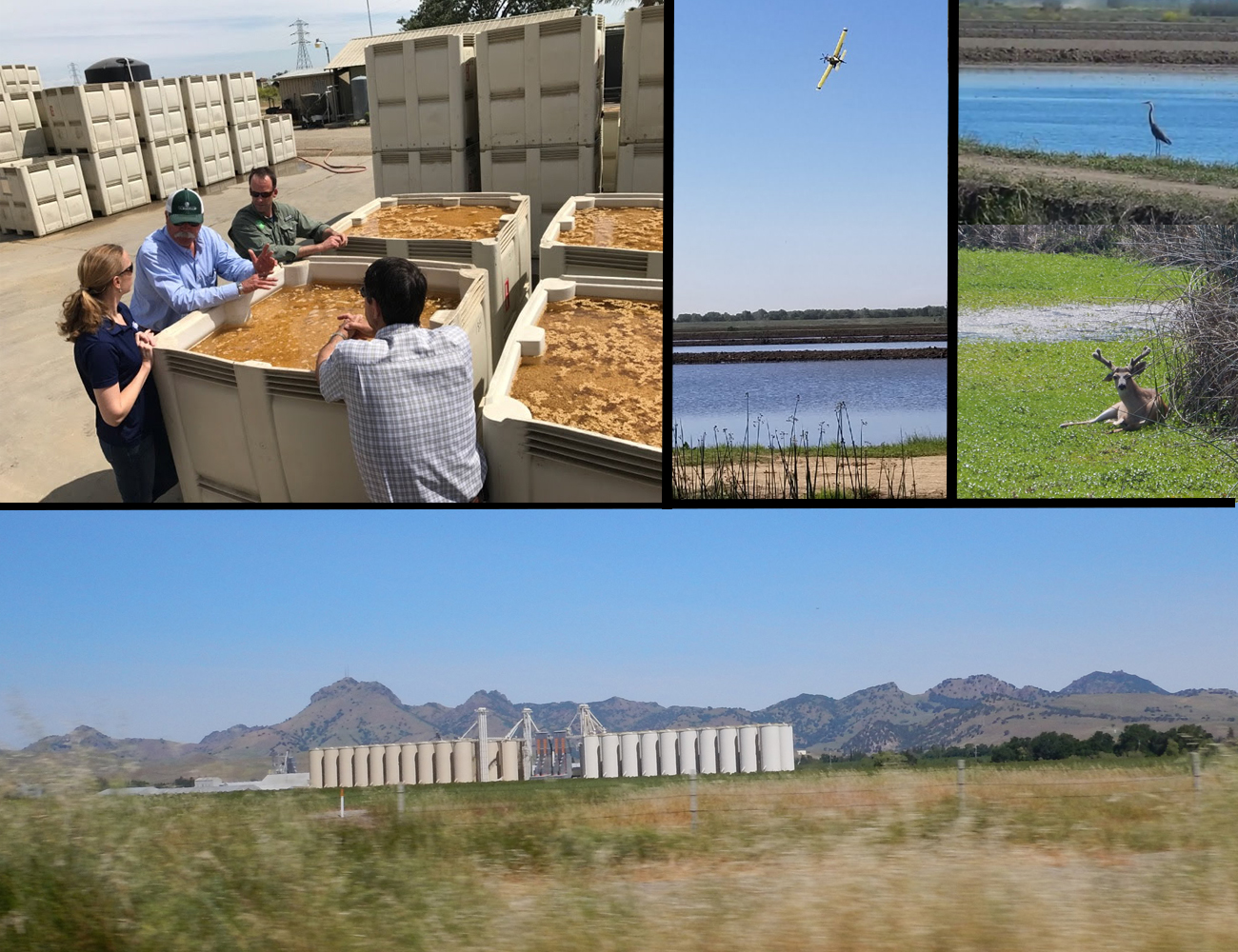 Look at all the life
Look at all the life
May 03, 2018
SACRAMENTO, CA -- Earlier this week, USA Rice’s Josh Hankins and Sarah Moran met with California Rice Commission (CRC) staff and observed rice planting in the second largest rice producing state.
Farmers at Montna Farms and LaGrande Ranches were busy tilling the land and planes were loading up soaked seed to plant during a relatively wind-free day. Bruce Rolen, a Colusa County rice farmer and seed supplier, gave USA Rice a tour of seed storage and preparation facilities.
USA Rice also visited the Sacramento National Wildlife Refuge, which consists of over 10,000 acres of wetlands for migratory birds and other wildlife. Curt McCasland, Project Leader at the U.S. Fish and Wildlife Service's (USFWS) Sacramento National Wildlife Refuge Complex and USA Rice’s guide at the Refuge for the day, eloquently articulated the vital role working ricelands play in necessary habitat and food for the survival of many species that reside in these regions.
“The close relationship between the Refuge and local rice farmers is a great story for our industry,” said Hankins. “California rice farms add hundreds of thousands of additional acreage for wildlife habitat.”
Moran also talked with several exporters about their top markets for California rice, such as Japan and Korea, and growing markets such as Jordan.
“Last year, Japan imported 100,000 MT of rice under the simultaneous-buy-sell (SBS) system which allows the rice to reach Japanese consumers origin-identified, and the U.S. had a 59 percent market share,” said Moran. “Japan values and appreciates the high quality rice grown here and, after seeing how diligently California farmers prepare the land for planting, you can appreciate why those overseas consumers want this rice.”